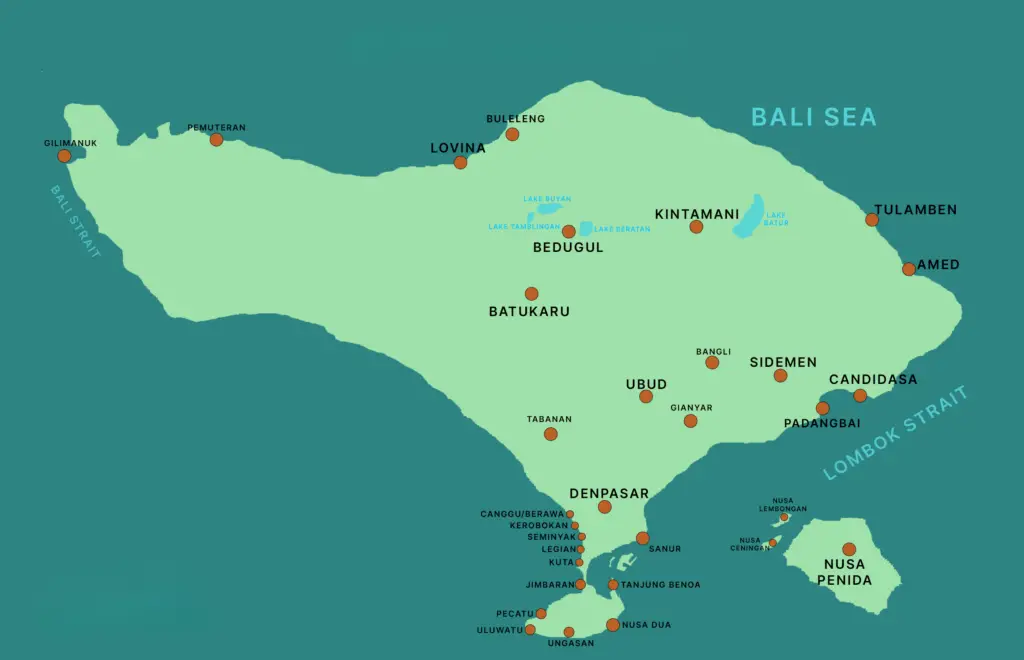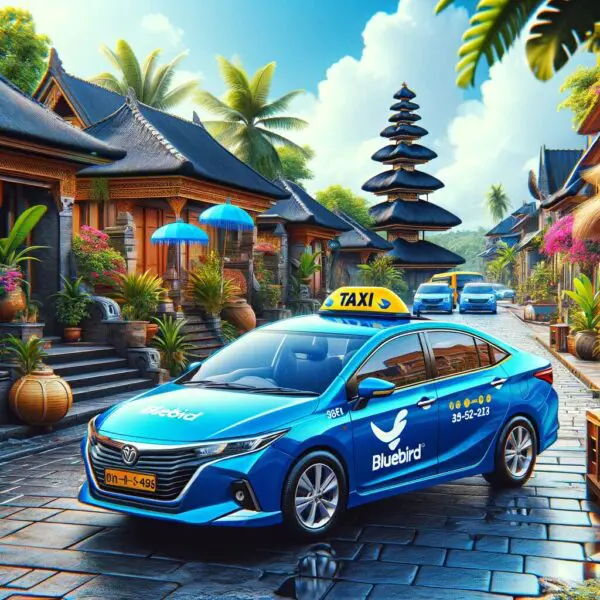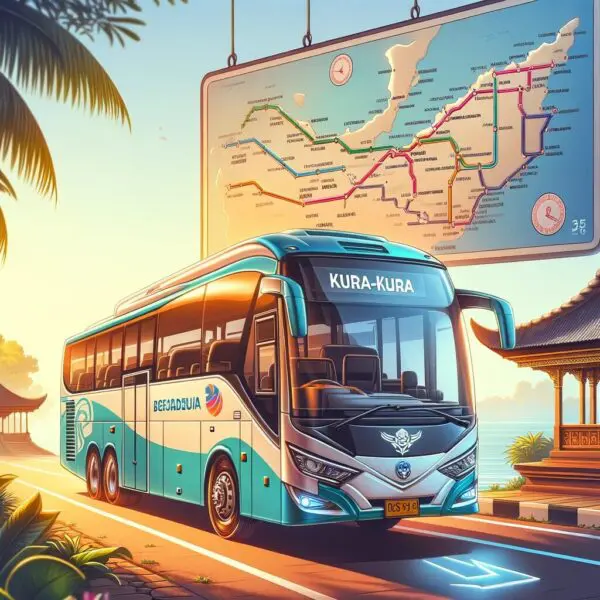Bali is one of the top tourist destinations in the world, famous for its beautiful beaches, lush rice terraces, majestic volcanoes, rich culture, and warm hospitality. With so much to see and do, selecting the right mode of transportation is crucial for an enjoyable and hassle-free vacation.
Bali’s small size belies the fact that distances between top attractions can be quite far, upwards of 2-3 hours of driving time. The island’s winding roads and heavy traffic in the main southern tourist hubs further compound transportation challenges. Therefore, understanding your options to get around Bali is key to make the most of your holiday.
Understanding Transportation in Bali

Bali’s landscape is dominated by forested volcanic mountains and rice paddies in the central and northern regions. The southern coastline where popular beach resort areas sit is more densely populated and developed for tourism. Main tourist sites are scattered throughout the island.
The busiest traffic and worst congestion occur around Kuta, Legian, Seminyak, Canggu, and Ubud where tourism is concentrated. Narrow roads and heavy motorbike and vehicle volume slow travel significantly during peak hours. Tourist sites in remote areas like mountains, jungles, and northern coastal regions remain less crowded but more difficult to access.
Getting around Bali requires planning for longer travel times, arranging reliable transportation, and budgeting for any traffic delays.
Transportation Options in Bali

Bali offers diverse transportation choices for visitors to explore the island:
- Scooters – Convenient and popular rentals allowing freedom to travel at your own pace. Best suit experienced riders.
- Taxis and Ride-Hailing Apps – Relax and let someone else navigate while you take in views. Easy to find rides using apps like Grab and Gojek.
- Car Rentals – Ideal for small groups wanting maximum flexibility to customize an itinerary. Consider hiring a driver unfamiliar with Bali’s roads.
- Public Buses – Cheapest way to travel between major tourist hubs, though schedules can be unreliable.
- Bicycles – Pedal power is great for short distances. Mostly suitable around Ubud rather than southern resort areas.
- Walking – Fine for nearby beach and restaurant access but other areas lack pedestrian infrastructure.
Carefully weigh the pros and cons of each option against your travel style, budget, and priorities to pick the best transportation modes for your Bali holiday.
Scooters and Motorbikes

Renting a scooter in Bali is extremely popular among tourists for good reason – it’s affordable, convenient and allows complete freedom to explore at your own pace.
Zipping around beautiful Bali on two wheels lets you easily escape congested main roads to uncover hidden gems down small backroads and stop spontaneously at whatever interests you. With literally thousands of scooter rental shops across the island charging only $5-15 USD per day, it’s an attractive option for solo travelers or couples.
However, Bali’s chaotic traffic, uneven road surfaces, and lack of formal riding training for foreigners pose safety concerns to consider before renting a scooter.
Legal Requirements
- Must have valid International Driving Permit (IDP)
- Standard car license insufficient
- Minimum age 18+ years
Rental Process
- Show passport, IDP, and cash deposit
- Inspect scooter condition and take photos
- No insurance offered
- Helmet provided
Costs
- Starts from 60,000 IDR ($4 USD) per day
- Weekly and monthly rates available
- Fuel costs 8,000 IDR ($0.50) per liter
Safety Tips
- Get IDP and some riding experience beforehand
- Drive slowly and defensively
- Wear protective gear and helmet
- Avoid riding at night
- Don’t drink alcohol and ride
First-time riders lured by low prices risk dangerous crashes trying to learn on Bali’s congested roads. Tourists are not immune from police enforcement of licensing laws. Consider your skill level carefully before renting a Bali scooter rental.
Taxis and Ride-Hailing Apps

When you’d rather sit back and relax than drive yourself, Bali taxi services offer an easy transportation option. Traditional street-hailed taxis and app-based ride-hailing through Grab and Gojek in Bali provide access to metered fares and cashless payment.
Bluebird Taxis are Bali’s reputable taxi company with over 20,000 blue-colored cabs across the island. Though many unaffiliated taxis mimic their look, checking for the logo and fleet number ensures you get the real, legal Blue Bird service. These drivers use the meter without hassle for a fair price.
Through the Grab and Gojek apps, you can order both car rides and motorbike taxis on-demand. Fares are provided upfront so there’s no meter confusion later. Pay directly by linking your credit card inside the app.
Taxis are best for short distances and give you a break from navigating Bali’s roads yourself. Apps make finding a ride simple anytime, anywhere across the island. However, costs add up quickly for longer trips due to metered fares and surge pricing.
Car Rentals

Renting a car in Bali gives flexible transportation for small groups to customize sightseeing. Many reputable companies offer latest models like Toyota Avanzas or Suzuki Ertigas for around 300,000 IDR ($20 USD) per day.
Hiring an additional English-speaking Bali driver only costs about 500,000 IDR ($35) total for a full day of touring. Drivers know shortcuts to avoid traffic, recommend sights, and can drop you along the way to points of interest.
Having your own private car and driver eliminates the stress of navigating Bali’s congested, winding roads yourself. You won’t waste precious vacation time stuck in traffic jams either. Despite the higher upfront costs over other options, a car rental with driver maximizes limited time to experience more of what Bali offers.
Public Buses

Public buses in Bali connect major towns across the island for locals and savvy tourists on a tight budget. The government operates public bus rapid transit systems on fixed routes from Denpasar towards Kuta, Ubud, Sanur and Nusa Dua areas.
A special Kura-Kura Bus service launched in 2020 also connects the main tourist hubs of Kuta, Legian, Seminyak, Kerobokan, Canggu, and Ubud using modern air-conditioned buses. This shuttle service costs 100,000 IDR ($7 USD) for a 1-day pass.
While very affordable, using public transportation requires time and patience. Schedules can be unreliable and sporadic outside of rush hour. Transfers between multiple buses to reach your destination can be inconvenient with luggage.
Bicycles and Walking

Pedaling a bicycle or walking are cheap, eco-friendly ways to explore Bali that ensure you soak up the lush scenery. Cycling routes in and around Ubud provide the best biking terrain, though some companies offer guided cycling tours from southern beach areas too.
Most travelers stick to biking in rural paddy field areas to avoid dense traffic and breathe fresh mountain air. Those comfortable cycling on roads can bike short distances around Seminyak and Canggu with caution. Helmets and protective gear are essential.
Beyond beach resort areas, walking extensively is unrealistic in Bali’s tropical heat and due to inconsistent sidewalks. However, nothing beats an early morning or sunset stroll along sandy beaches to grab dinner. Use caution crossing busy streets.
Safety and Legal Considerations
Tourists planning to drive any vehicle in Bali must carry an International Driving Permit along with their native license. An IDP translates your existing license into globally recognized languages. Police frequently fine foreigners driving without an IDP.
When renting a scooter, motorbike or car, check your travel insurance covers medical claims related to driving accidents abroad. Wear helmets and drive defensively – you may be held liable for any damages.
Avoid driving after dark when possible. Road conditions worsen and many locals drive dangerously using high beams. Drive slowly and carefully, especially around blind corners or potholes.
Using reputable and legal taxi, car rental and rideshare services through an app provides protection in case issues arise. Never ride with street taxis touting rides without proper markings. Confirm agreed fares upfront.
Environmental Impact
Bali’s roads are notoriously clogged thanks to over 6 million vehicles registered across the island. Mass tourism and a car-centric culture exacerbate air pollution, especially in urban areas. Travelers must consider transportation’s environmental impact too.
Opting for public transportation and bicycle or walking tours greatly reduces your carbon footprint and sets a sustainable example for locals. Seek out eco-friendly hotels using renewable energy sources as well.
When driving or riding is a necessity, choose fuel-efficient scooter and car rental models rather than gas-guzzling jeeps or vans for better mileage. Dispose of litter properly and eliminate single-use plastics that too often end up in the ocean.
Making conscientious transportation decisions while balancing realistic holiday needs demonstrates your commitment towards preserving Bali’s natural beauty for future generations.
Cost Comparison and Budgeting Tips
- Scooter Rentals – $4-15 USD per day
- Grab/Gojek Car Rides – Base fares start around $1 + $0.50 per km
- Metered Taxi Fares – Flagfall $0.50 + $0.60 per km
- Car Rental/Driver – $20-40 per day for car + $35 per day for driver
- Public Buses – $0.50 per short trip
- Bicycle Rental – $2-5 per day
- Boat Transfers – $15-20 to Nusa Islands or Gili Islands RT
When budgeting transportation costs for your Bali trip, allow extra funds for fuel, parking fees, toll roads, or getting stuck in traffic jams accruing metered charges.
Carefully research routes and modes best suiting your must-see destinations. For example, boat transfers are required to reach gorgeous beaches on Nusa Lembongan and the Gili Islands.
Pre-booking larger expenses like car rental lets you lock in rates and allocate funds accordingly rather than getting overcharged last minute. Having some emergency cash for incidentals ensures you don’t miss out.
Conclusion
With pristine beaches, emerald rice terraces, sacred Hindu temples, and renowned hospitality, Bali offers incredible diversity for travelers seeking both relaxation and adventure.
Navigating this paradise island requires some transportation planning and compromise. Prioritize must-see attractions then select suitable modes balancing affordability, convenience and safety.
For many, renting a Bali scooter rental means freedom exploring backroads or stopping spontaneously despite road hazards. Brave riders love the flexibility two wheels provide.
Those preferring to sit back and soak up gorgeous scenery can order metered Bali taxi rides or car rental with driver through handy apps. Your personal guide shares insights while you admire lush vistas zipping by.
Regardless how you choose to get around Bali – scooter, taxi, rental car, or public bus – respecting local culture and customs ensures memorable journeys discovering the island’s unique spirit.

